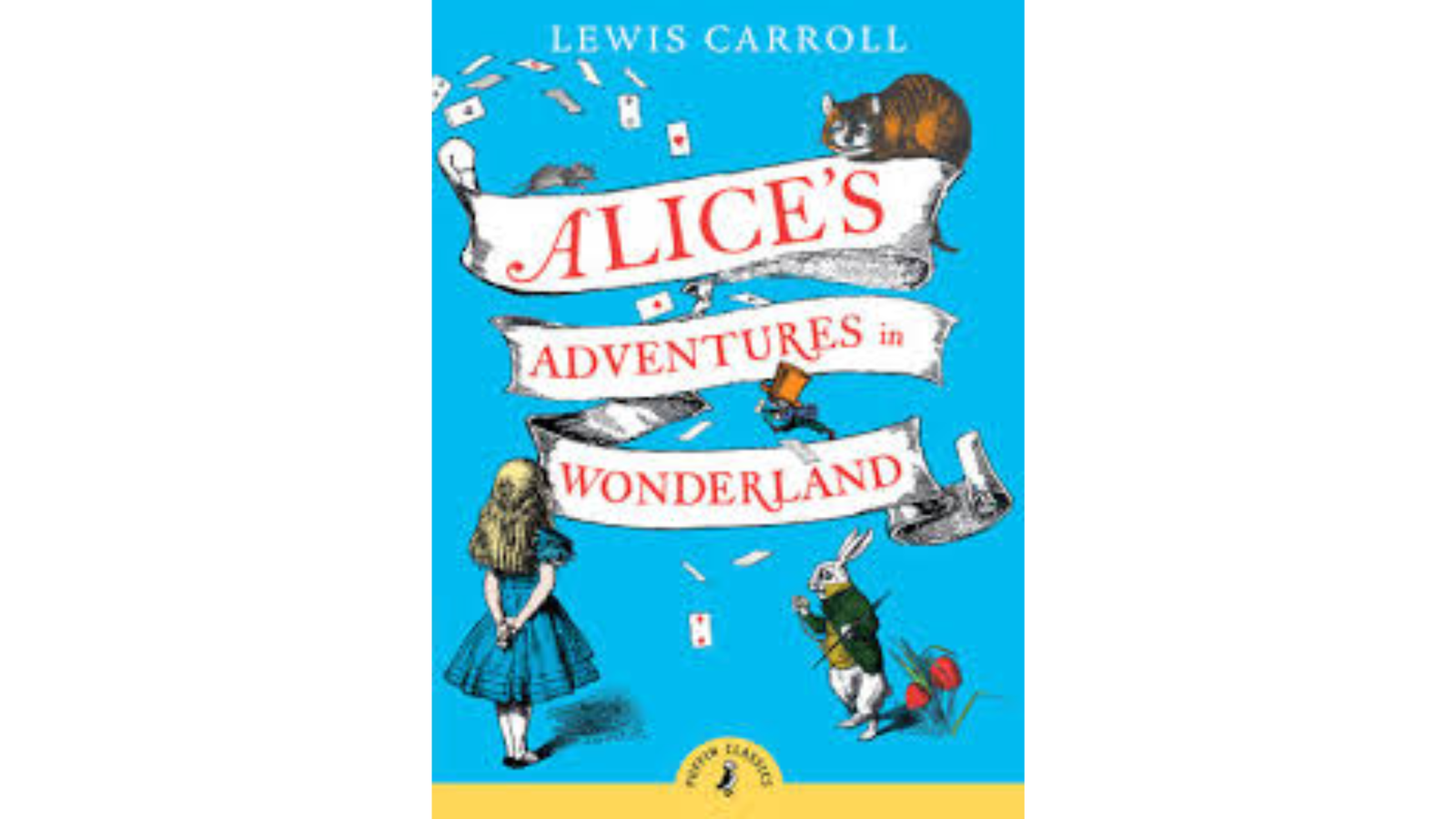First published in 1865, Lewis Carroll’s Alice’s Adventures in Wonderland has endured as one of the most beloved works in children’s literature and adult literary circles. The fantastical world that Alice stumbles upon after following a rabbit down a hole constantly challenges reality defies logic and invites readers to reflect on life’s absurdities. Yet beneath the surface of whimsical characters and nonsensical events lies a deep exploration of identity, power, and the human experience.
This post delves into the multi-dimensional world of Wonderland, examining its rich themes, iconic characters, and the lasting impact this surreal tale has had on readers and society.

A World of Absurdities: Themes That Transcend Time
At the heart of Alice’s Adventures in Wonderland is its surreal nature, where logic is bent, and the improbable reigns supreme. In Wonderland, the rules of reality are malleable. Characters like the Cheshire Cat, with his cryptic, grinning demeanour, and the Mad Hatter, whose time is perpetually stuck at 6 o’clock, embody the book’s central theme of absurdism. Time is fluid, authority is arbitrary, and reality is constantly shifting, forcing Alice—and, by extension, the reader—to confront the disorienting complexities of life.
The novel’s absurdity isn’t just for entertainment; it’s a commentary on the absurdity of societal norms. The story critiques established systems, from the chaotic monarchy of the Queen of Hearts to the nonsense-filled courtroom of the Mock Turtle. In Wonderland, everything is upended, a clever metaphor for questioning societal conventions and the nature of authority.
Identity and Self-Discovery: Alice’s Transformation
One of the most compelling aspects of Alice’s Adventures in Wonderland is its exploration of identity. Throughout the story, Alice’s physical form changes, sometimes growing taller and sometimes shrinking, which mirrors her internal journey of self-discovery. These dramatic shifts in size symbolize her evolving understanding of herself in a world that refuses to adhere to the rules she knows.
This process of transformation speaks to the universal experience of growing up—learning to navigate an often unpredictable, chaotic, and confusing world. Alice’s journey becomes an allegory for the search for personal identity in an ever-changing world. As she encounters increasingly bizarre characters, she must reconcile these external changes with her own internal sense of self.
The Cast of Characters: Satire, Symbolism, and the Absurd
Each character in Alice’s Adventures in Wonderland is more than just a quirky figure; they represent aspects of society, power, and human nature. The White Rabbit, perpetually late, embodies the urgency of time and societal pressure. His obsession with punctuality highlights the absurdity of living in a world governed by arbitrary deadlines and expectations.
The Cheshire Cat, ever-smiling and elusive, serves as a philosophical guide. His cryptic advice, such as the famous line, “We’re all mad here,” suggests that madness is not a deviation but an accepted part of life in Wonderland. The Cat’s ability to appear and disappear at will mirrors the transient nature of identity and existence itself.
And then there is the Queen of Hearts, whose frequent cries of “Off with their heads!” encapsulate the irrationality of tyrannical power. Her unpredictable cruelty is a direct commentary on the dangers of absolute authority and a warning about the capriciousness of unchecked power.
Philosophical Depth: Wonderland’s Exploration of Reality and Authority
At its core, Alice’s Adventures in Wonderland is a philosophical investigation into the nature of reality, identity, and authority. Carroll, a mathematician and logician, imbues the narrative with paradoxes and logical puzzles that challenge readers to question the reliability of their own perceptions. From the nonsensical conversations with the Caterpillar to the trial scene that defies all logic, Wonderland offers a mirror to society’s arbitrary structures.
Another central theme of the novel is its exploration of power dynamics. The Queen of Hearts’s erratic rule represents the unpredictable and often nonsensical nature of authority, while the Mad Hatter and March Hare embody the breakdown of logical thought. Through these characters, Carroll subtly critiques the political and social systems of his time, revealing the arbitrary nature of the world Alice navigates.
The Legacy of Wonderland: From Page to Popular Culture
Since its publication, Alice’s Adventures in Wonderland has had an enduring influence on popular culture. Its surreal imagery and playful wordplay have inspired numerous adaptations across different media, from Disney’s 1951 animated film to Tim Burton’s 2010 reimagining. The book has also inspired everything from academic studies in literature and philosophy to visual arts and modern digital storytelling.
The themes explored in Wonderland—absurdity, the fluidity of reality, and the questioning of authority—continue to resonate today. In an era of political uncertainty and societal upheaval, Alice’s Adventures in Wonderland stands as a timeless reminder of the importance of questioning the status quo and embracing the absurdity of life. The story’s influence extends far beyond literature; it has shaped everything from memes to avant-garde art, ensuring that Wonderland will continue to captivate and inspire for generations to come.
Conclusion: The Enduring Charm of Wonderland
Alice’s Adventures in Wonderland is more than just a fantastical children’s story. It is a profound exploration of the absurdity of life, the fluidity of identity, and the arbitrary nature of authority. Through Alice’s surreal journey, Lewis Carroll invites us to question the world we live in and challenges us to think critically about the norms, expectations, and systems that govern our lives.
Whether you’re revisiting Wonderland for the first time or rediscovering its deeper meanings, the story remains as relevant today as it was over 150 years ago. Alice’s adventures through the rabbit hole are not just an escape into a world of whimsy—they are an invitation to explore the complexities of life itself.